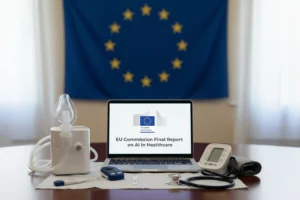The International Organization for Standardization (ISO) is preparing a revision of ISO 10993-1, the critical standard governing the biological evaluation of medical devices. This update is expected to bring substantial changes, emphasizing a more structured approach to risk management and biocompatibility assessments. The final version of ISO 10993-1 is expected by mid-2025, and medical device manufacturers must stay informed about these developments to ensure compliance and maintain the highest standards of safety and efficacy.
Key Revisions in ISO 10993-1
The upcoming revision introduces several important updates:
Enhanced Risk-Based Approach: The revised standard strengthens the integration of biological evaluations within a comprehensive risk management framework, aligning more closely with ISO 14971. Manufacturers must assess and document potential biological risks throughout the device’s lifecycle.
Lifecycle Considerations: Greater emphasis will be placed on evaluating biocompatibility not just during initial product development but across the entire lifecycle, including post-market surveillance. For reusable devices, reprocessing and repeated use will also require ongoing biocompatibility assessments.
Alternative Testing Methods: The revision underscores the importance of reducing reliance on animal testing. Where possible, manufacturers must prioritize in vitro and in silico testing methods, ensuring ethical and scientifically robust evaluations. When biological equivalence can be established with existing data, additional in vivo testing may be unnecessary.
Updated Categorization of Medical Devices: Changes in device classification based on contact duration and tissue interaction will streamline evaluation processes. The term “externally communicating devices” will no longer be used, and clearer definitions for exposure durations will be introduced.
Impact on Manufacturers
Manufacturers must proactively assess the implications of these revisions:
Comprehensive Gap Analysis: A thorough gap analysis should be conducted to identify information deficiencies in current biocompatibility data. Developing a detailed biological evaluation plan to address these gaps is crucial for compliance.
Engagement with Regulatory Bodies: Active engagement with Notified Bodies and regulatory authorities during this transition is essential to ensure alignment with the new requirements and to facilitate a smooth approval process.
Adaptation of Testing Strategies: Manufacturers may need to adapt their biocompatibility testing strategies, incorporating alternative methods and focusing on chemical characterization to predict device safety and mitigate potential toxicological risks.
Conclusion
The upcoming revision of ISO 10993-1 represents a pivotal shift towards a more integrated and ethical approach to the biological evaluation of medical devices. Manufacturers are advised to familiarize themselves with these changes and take proactive measures to ensure compliance, thereby maintaining the highest standards of patient safety and product efficacy.





